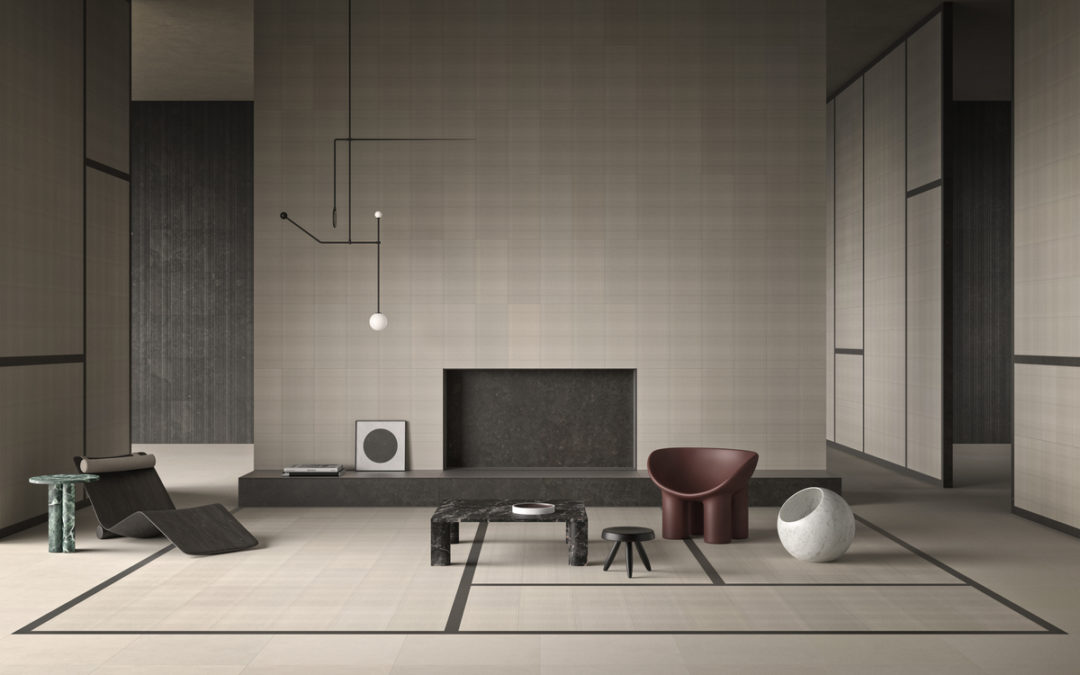Podcast er ikke et nyt fænonem, men har over de sidste fem til ti år haft en markant stigning i både interesse og i antallet af aktive podcasts. Tendensen er klar i Danmark såvel som internationalt. Vi har i VOCAST derfor valgt at sætte fokus på podcastmediet, og har...

Review our webinar: Defining the new brand journey – what is the future role of fashion trade shows?
5 takeaways from our webinar: Defining the new brand journey – what is the future role of fashion trade shows?
Digitalization is at the forefront of the conversation about what is changing in the fashion industry. The need for brands to have an online presence and operate business digitally has been continuously rising, especially in the past few seasons. This shift is undoubtedly changing the blueprint and make-up of industry events, shows, and fairs. Trade fairs have always played an integral role in the fashion industry, and innovative adaptations are being implemented within them as times change, so what is the future role of fashion trade shows, and how important are they indefinite the new brand journey?
Our Co-Founder Jens Hamborg Koefoed sat down with Christina Neustrup, Director of CIFF (Copenhagen International Fashion Fair), and Edwina Kulego, Vice President of International and Business Development at Informa Markets to discuss what role trade shows play for fashion brands, how they support brands, their criteria for screening, the new brand journey (digital vs physical showcase) and will share their challenges and changes for the future. Here are the 5 main takeaways of our webinar – « Defining the new brand journey – what is the future role of fashion trade shows? » for you here:
1. The role of trade shows has changed because of digital tools but brands need to know how they are still relevant in the future:
Christina: We need trade shows in the future and we actually had a confirmation of that during Covid. We got feedback from buyers that they were really missing physical that interaction. That’s because they are craftspeople, they really appreciate the tactility of our business. For them to do their job right, it’s also again getting the inspiration, meeting the brands, being there, getting their hands into the material.
Also, we got a confirmation of the long-standing role of the trade show, it’s very much about getting together and lifting together. It also means a lot for convenience for buyers, convenience for the industry and just getting together with the people you work with. We shouldn’t underestimate the whole community part of it – getting a lot of people with relevance together in one spot.
Edwina: Brands that are successful in the market today are the ones that are putting their efforts into multi-channels. Wholesale is still very important, touching and feeling, the discovery part. Buyers are still coming to place orders at trade shows. Then you have the e-commerce part, the direct-to-consumer. A lot of brands are focusing on ways to contact their consumers directly. Then you have the social media aspect and the content part.
I think brands are not diversifying their offering, but it doesn’t eliminate the fact that you still want to present at a trade show, you still want to show your initiatives, what you’re working on, and you want to tell your brand story. Many brands treat trade shows as a transactional thing but it’s also a way to showcase who you are and state your brand DNA, and a lot of buyers come to discover just that.
2. The transactional element of trade shows is changing due to new services and offerings:
Christina: People do place orders digitally, but a lot of the discoveries are taking place at the trade shows. Before we could open our doors twice a year and people had to come in to see the new summer collection or winter collection, now people trade all through the year. But we still have the relevance that brands can attract and show who they are. It’s a lot about brand DNA and the marketing part has always been a big part of trade shows, but I would say it’s even bigger now.
Edwina: That shift has also resulted in the way that we curate our shows. It’s not less trade, it’s still important, but it’s also focusing on an event. You’re now inspiring people more with events and keeping them on the trade show floor longer with activations, we’re curating panels, and providing education for the attendees coming – whether it’s a buyer, or press, or an influencer.
You’re navigating the show, with trade in mind but also having different experiences to connect with the fashion industry as a whole. Trade show producers now are thinking about other things that they can add to create more value at the shows.
Christina: We’re pitching an experience for the buyers and also a lot of the buyers come to the trade shows to experience “new” – to get new knowledge. So us delivering the convince of getting the relevant brands together and the knowledge part, where is the industry going in terms of content, in terms of sustainability. They need to know all these things. We provide that for them, we do a curated show that they can walk through and get these things done.
Edwina: Sustainability is a big conversation obviously, we all have a responsibility to do better. So we are now asking specific questions for brands on the contract when they sign up. We have retailers who are looking to identify those brands at the show. That’s another way in which we’re changing, we’re also using those important factors to re-merchandise our shows and to make the wayfinding easier.
3. Trade shows still are an important place of discovery for buyers, retailers, and industry professionals:
Christina: I know from many of the buyers it’s about them getting out there. There are other brands that are doing very successfully online, having a great social media presence, but upcoming brands still need that discovery. Buyers need good quality, good products, and that’s not always something you discover online. We shouldn’t underestimate the salesperson either that’s a craft as well; the presentation of the collection. Meeting the salesperson there is a totally different buying experience.
4. Consumers are becoming more complex and conscious in their purchasing, trade shows can curate the right brands for the retailers:
Edwina: We want to be more informed. I want to know a bit more about the brand, I’d love to know where it’s produced, I’d like to know if it supports a community that needs it, and I want to know if some of the brands I purchase from are Black-owned for example, or minority-owned. These questions are coming up. Gen-Z and Millennials have clearly stated that they want more information before they hit purchase so we, as trade show producers, have a responsibility to look for those brands.
5. Brands need to elevate and upkeep their digital content to stay relevant, even for physical events and shows:
Edwina: We are being asked by brands how we can support them in telling their story and their messaging. In our screening process, before we accept any brands into our shows, we’re looking at their look books, their line sheets, we’re looking at their Instagram. I think now Instagram is becoming more popular than the actual website, so we have a team that’s looking at multiple digital ways for the brands to tell their stories.
Sometimes if brands aren’t able to do it in an efficient way or if it’s not cohesive, we may miss the mark on a great brand. We are digitally accepting brands into our shows and that becomes an important part of the process.
Christina: It is still very much up to the brands. We lend them our platform, but it’s still up to them to produce the content and have enough content. Most brands, thankfully, are really aware of this and they’re really good at it.
We doubled our work in the sense that we now do both digital and physical. But our main part is still the physical, the digital part really supports our brands and buyers before they enter the show space. You can never fully swap the two, we got a confirmation that physical trade shows are still needed because we couldn’t translate the things we do in the physical space to the digital.
Meet our experts
Christina Neustrup – Director of CIFF
Christina Neustrup is the Director of the Copenhagen International Fashion Fair. During her career, Neustrup has worked alongside and with many prominent creators and brands: Designer and founder Malene Birger, Stine Goya, and Mark Kenly Domino Tan to mention a few. She has worked in the fashion industry for more than two decades and is known in the industry as an experienced creative, specializing in business development through brand-building.
Edwina Kulego – Vice President of International and Business Development at Informa Markets
Born and raised in Sweden by Ghanaian parents, Edwina Kulego is the Vice President of International and Business Development at Informa Markets Fashion. Edwina has over 12 years of experience in the fashion and events industry. Edwina is also the founder and CEO of Essentials By Edwina: a vegan, makeup collection designed for women of color. Fluent in Swedish, English, Ga, Twi, and proficient in Danish, Edwina was poised to be a trendsetter in International Business.
Let’s get digital
Digitalization is at the forefront of the conversation about what is changing in the fashion industry. The need for brands to have an online presence and operate business digitally has been continuously rising, especially over the past few seasons. Meeting and sharing content online became even more integral for brands due to the restrictions we have collectively experienced during the pandemic, but the trend of brands moving into a more digital universe had been occurring before this. This shift is undoubtedly changing the blueprint and make-up of industry events, shows, and fairs. Learn more about the VOCAST image bank feature here: https://vocast.com/digital-showroom.


















